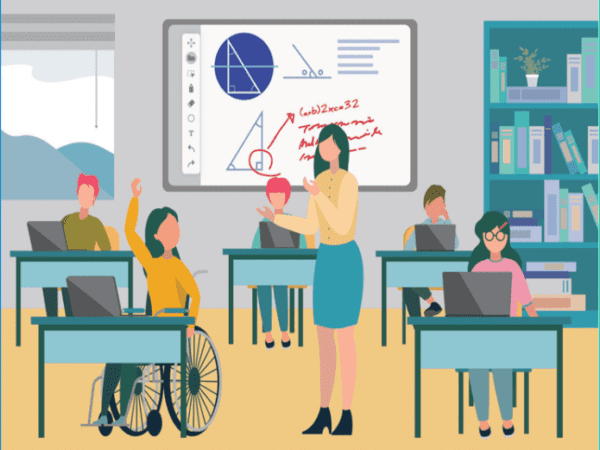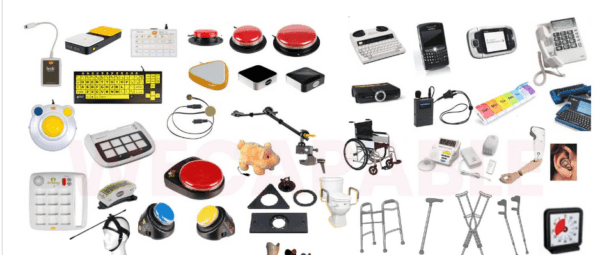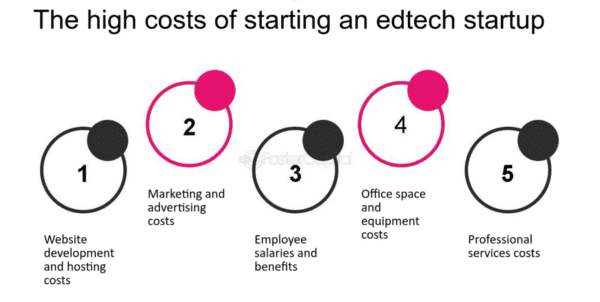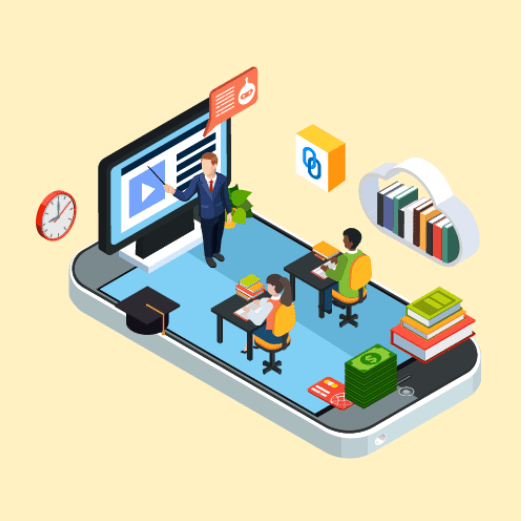If you’re a teacher or parent of a child with special needs, you may be wondering how technology can help improve their education. Edtech methods are increasingly used to support learners with special needs, providing them with more accessible and engaging learning experiences. With the right tools and strategies, technology can help level the playing field and ensure that all students have the opportunity to succeed.
Understanding Edtech in special needs education is crucial to making informed decisions about which tools and approaches to use. Edtech can encompass various technologies, from assistive devices to online learning platforms to virtual reality tools. It’s essential to consider the specific needs of each student and how technology can be used to support their learning goals. By taking a pedagogical approach and focusing on learning outcomes, educators can ensure that technology is being used effectively to enhance the learning experience for students with special needs.

Key Takeaways:
- Edtech methods are increasingly being used to support learners with special needs.
- Understanding Edtech in special needs education is crucial to making informed decisions.
- By taking a pedagogical approach and focusing on learning outcomes, educators can ensure that technology is being used effectively to enhance the learning experience for students with special needs.
Understanding Edtech Methods in Special Needs Education
Defining Educational Technology
Educational technology, or edtech, is using technology to enhance teaching and learning. This can include hardware, software, and digital content. Edtech has become increasingly popular in recent years, as it has the potential to improve student engagement, increase access to educational resources, and personalize learning experiences.
In special needs education, edtech can be used to support students with disabilities in various ways. For example, assistive technologies such as text-to-speech software or screen readers can help students with visual impairments access digital content. Other assistive technologies, such as speech recognition software or alternative input devices, can allow students with physical disabilities to participate in classroom activities.
The Role of Edtech in Special Education

Edtech can potentially play a significant role in improving outcomes for students with disabilities. By providing access to digital content and assistive technologies, edtech can help level the playing field for students with disabilities and ensure they have the same opportunities to learn and succeed as their peers.
In addition to providing access to assistive technologies, edtech can also be used to personalize learning experiences for students with disabilities. For example, adaptive learning technologies can adjust the difficulty of content based on a student’s individual needs and abilities. This can help ensure that students are challenged but not overwhelmed and can help them progress at their own pace.
Overall, edtech has the potential to be a powerful tool for supporting students with disabilities in special needs education. By providing access to digital content and assistive technologies and by personalizing learning experiences, edtech can help ensure that all students have the opportunity to learn and succeed.
Technology and Disability
Assistive technology has revolutionized how children with disabilities learn and participate in educational activities. Assistive technology refers to any device, equipment, or software that helps individuals with disabilities perform tasks they would otherwise struggle with.
Assistive Devices for Various Disabilities
Assistive technology devices come in different forms, each designed to help individuals with specific disabilities. For instance, children with visual impairments can benefit from braille displays, screen readers, and magnifiers. Children with hearing impairments can use hearing aids, cochlear implants, and sign language interpretation software. Children with physical disabilities can use wheelchairs, crutches, and other mobility aids to move around and participate in activities.

Accessibility and Participation
Accessibility is a critical aspect of assistive technology. To ensure that children with disabilities can participate fully in educational activities, it is essential to make sure that the learning environment is accessible. This means that the physical environment, instructional materials, and digital resources should be accessible to all learners, including those with disabilities.
Institutions can use various technologies to make learning more accessible. For example, closed captioning and audio descriptions can be added to videos to make them accessible to students with hearing or visual impairments. Institutions can also use learning management systems compatible with assistive technology devices, such as screen readers and braille displays.
Overall, assistive technology can potentially transform the lives of children with disabilities. With the proper assistive devices and accessibility measures in place, children with disabilities can participate fully in educational activities, acquire knowledge and skills, and achieve their full potential.
Pedagogical Approaches and Learning Outcomes
Incorporating Technology into Pedagogy
Regarding special needs education, incorporating technology into pedagogy can effectively engage learners and improve learning outcomes. For example, iPads and other tablets can provide interactive and multisensory learning experiences that are particularly beneficial for students with dyslexia and other literacy challenges. Technology can also be used to create games and different gamified learning experiences that help students with developmental disabilities learn essential skills in a fun and engaging way.
However, it’s important to note that technology should never be used as a substitute for effective teaching practices. Instead, technology should be used to enhance and support practical pedagogical approaches. This means that educators must carefully consider how technology can be used to meet the specific needs of their students and how it can be integrated into their existing teaching practices.

Measuring Learning Outcomes
One of the key benefits of incorporating technology into special needs education is that it allows for more accurate and detailed measurement of learning outcomes. For example, technology can track student progress, identify areas where students are struggling, and provide personalized feedback and support. This can be particularly beneficial for students with special needs, as it allows educators to tailor their teaching approaches to meet the specific needs of each student.
However, it’s important to note that measuring learning outcomes is not simply collecting data. Educators must also carefully analyze and use this data to inform their teaching practices. This means that educators must have a deep understanding of the specific learning needs of their students and how technology can be used to meet these needs. It also means that educators must be able to interpret and analyze data meaningfully to make informed decisions about improving learning outcomes.
Implementation and Challenges
Implementing edtech methods for special needs education can be challenging due to several factors. Overcoming these barriers requires a clear understanding of the challenges and the development of strategies to address them.
Overcoming Barriers to Implementation
One of the main challenges in implementing edtech methods for special needs education is the lack of infrastructure. This can include a lack of internet access, limited availability of devices, and inadequate training for teachers. Schools must invest in infrastructure and provide teacher training to overcome these barriers.
Another challenge is the limited budget for edtech. Schools may not have the resources to purchase the necessary devices and software to support special needs education. One solution is to seek funding from external sources, such as grants or donations. Additionally, schools can explore open-source software and free resources to reduce costs.
Cost and Funding in Edtech

Cost is a significant factor in implementing edtech methods for special needs education. Schools need to consider the cost of devices, software, and training. In some cases, the cost of edtech may be prohibitive, making it challenging to implement on a large scale.
Funding is critical to support the sustainable development of edtech in special needs education. Schools can seek funding from government programs, non-profit organizations, and private donors. It is essential to ensure equitable funding is distributed fairly to support independence and equity in special needs education.
Implementing edtech methods for special needs education requires understanding the challenges and strategies to overcome them. Overcoming barriers such as limited infrastructure and budget involves investment in infrastructure, training, and seeking external funding. Schools must ensure that funding is equitable and distributed relatively to support the sustainable development of edtech in special needs education.
The Future of Edtech for Special Needs
As technology advances, the edtech industry becomes more inclusive and accessible for students with special needs. Emerging technologies and innovations are being developed to cater to the unique needs of these students, while policymakers and researchers are focusing on sustainable development to ensure equal access to education for all.
Emerging Technologies and Innovations
One of the most promising technologies for special needs education is augmented reality (AR). AR can create an immersive learning experience that engages students and helps them better understand complex concepts. For example, visually impaired students can use AR to explore 3D object models and better understand their properties.
Another emerging technology is Boom Cards, which are interactive digital task cards that can be customized to meet the specific needs of individual students. Boom Cards can be used for various subjects and adapted for different learning styles and abilities.

Policy, Research, and Sustainable Development
Policymakers recognize the importance of edtech for special needs education and are implementing initiatives to ensure equal access to technology for all students. For example, the United Nations Sustainable Development Goals (SDGs) call for inclusive and equitable quality education for all, including students with disabilities.
Research designs are also being developed to evaluate the impact of technology on special needs education. Studies have shown that online learning can be effective for students with special needs. Still, it is essential to ensure that online materials are accessible and compatible with screen-reader technology.
In conclusion, the future of edtech for special needs education is promising and exciting. Emerging technologies and innovations are being developed to cater to the unique needs of these students, while policymakers and researchers are focusing on sustainable development to ensure equal access to education for all. As technology advances, the possibilities for special needs education are endless.
